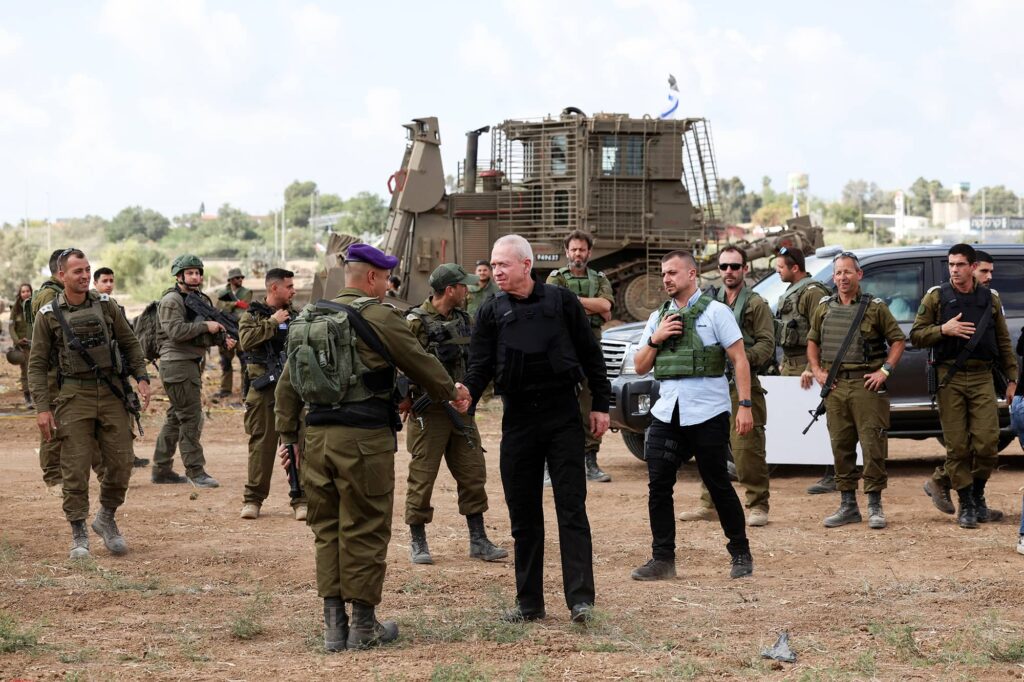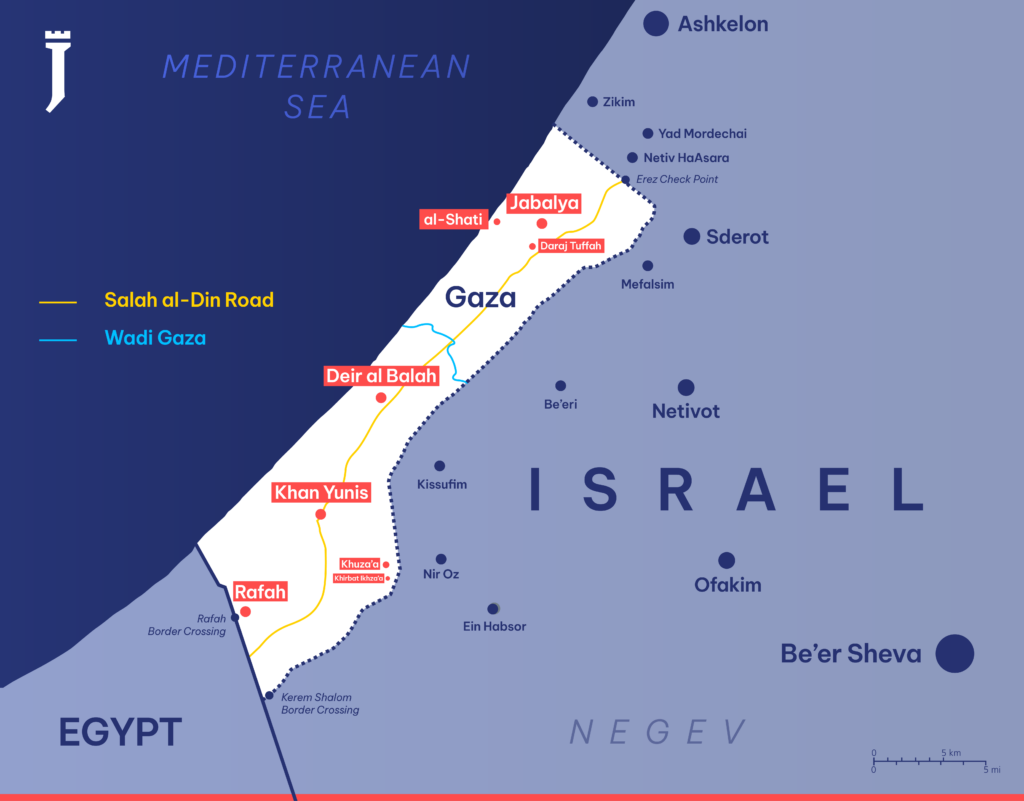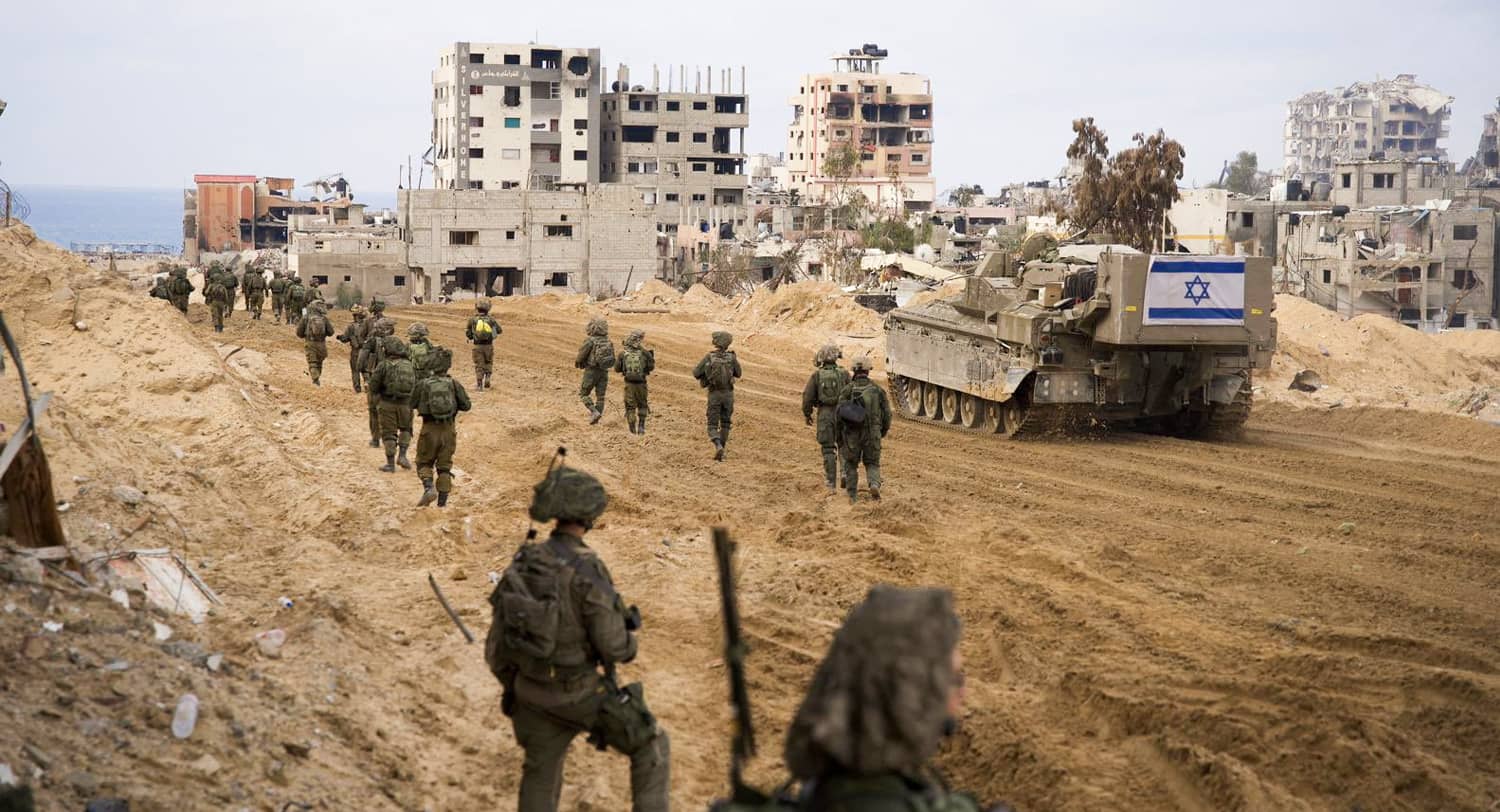Three months into the war in Gaza ,with the defeat of most of the Hamas battalions in northern Gaza, the Israel Defense Forces (IDF) is preparing for a new phase of fighting. The new phase will focus on removing terrorist infrastructure in northern and central Gaza. It will include continued battles in and around Khan Yunis in the south of the Strip. Many IDF reserve units that played key roles in bolstering forces in Gaza are now returning to Israel and preparing for new missions. The IDF will focus on more precision strikes conducted mostly by its regular forces. This is in line with its training over the last several years.
Whether this defeats Hamas remains to be seen.
>> Reports from the Gaza Front: Read more from Seth J. Frantzman
On January 2, Israel’s Minister of Defense Yoav Gallant went to Gaza and visited troops on Salah al-Din Road. The road connects northern and southern Gaza. This is the junction where the 36th Division cut Gaza into two parts in late October 2023, during the beginning of the ground campaign, preventing Hamas from supplying its northern battalions. Ten of those battalions were then ground down, bit-by-bit, street-by-street, until they had to go completely underground. Now it appears they have lost command and control, fighting in uncoordinated small units from the tunnels.
“The feeling that we will stop soon is incorrect – without a clear victory, we will not be able to live in the Middle East,” said Gallant. This has been his narrative throughout the war. “We are ending this campaign when Hamas no longer functions as a governing body and certainly not as a military body that sends troops [to conduct attacks].”
Gallant’s view may not be shared by all of the political leadership, because there are differing views about what it means to defeat Hamas. Does it mean to eliminate Hama’s capacity for offensive military action? Does it require the complete removal of Hamas from Gaza? Could “victory” in Gaza mean merely degrading Hamas’ battlefield capabilities, so that Hamas no longer poses a “threat” but still operates thousands of terrorists in Gaza?

Gallant met with IDF soldiers from the new Division 99 and its commander Brigadier General Barak Hiram. Division 99 is part of the combined arms approach the IDF has sought to roll out as part of its Momentum Plan since 2020, part of previous IDF Chief of Staff Aviv Kochavi’s concept of how to achieve victory. It is designed to move intelligence and other resources to the front, to close “sensor-shooter” loops and making things move faster in order to more quickly defeat enemy capabilities.
Hamas has been mostly defeated in northern and central Gaza, and its capabilities are reduced. However, it is not entirely clear if those capabilities have been reduced more effectively in this war than in previous ones. Hamas was still able to fire a barrage of long-range rockets at central Israel just after midnight on January 1, showing that it could threaten Israel in the new year. But Hamas has fewer rockets now, reducing the threat in practical terms.
Hamas began the war with some two dozen fighter battalions, around 25,000 men, according to IDF estimates. Now, Gallant says that 12 Hamas battalions were destroyed in northern Gaza – in al-Shati, Jabalya, and Shujaiya and other areas – in difficult fighting. “There are terrorists left, several thousand out of the 15 to 18 thousand that were in this area. A large number of terrorists were eliminated, while some fled to the south,” said Gallant.
Nevertheless a lot of operations remain in the north. On January 1, the IDF said that the 401st Armored Brigade targeted a building in Gaza City and found a “strategic stronghold of Hamas in Gaza City” that included 37 buildings. The 460th brigade, one of the units that recently left Gaza, also conducted operations in various areas of al-Shati, Jabalya and Daraj Tuffah, the last in Gaza’s Old City.

I went to Gaza in late December with the IDF’s new multi-dimensional unit, nicknamed the Ghost unit, part of the 99th Division. To get to its area of operations in Jabalya, where it was located at the time, I traveled to the border of Gaza. The unit uses new Iron Sting precision mortars and drones to assist its work in targeting terrorists. The concept behind these new units is to combine special units from the infantry, armored vehicles and combat engineers, and connect them to easy access to aerial assets. That could mean calling in drone strikes or air strikes.
Traveling into Gaza was an interesting experience. We took a Namer armored personnel carrier from the border. Before loading up we came under mortar fire. Hamas still has capabilities to fire at border communities from northern Gaza. Traveling into Gaza, no civilians were present and there wasn’t evidence of a lot of heavy fighting. The enemy has mostly vanished beneath the ground, into tunnels. Hamas carries out hit and run attacks, but for the most part it has abandoned the surface areas in northern Gaza where the IDF is operating. That means the IDF continues to suffer some casualties, but the sense that the war has changed is clear. The IDF has now lost 509 soldiers as of January 3 (including those lost on October 7).
There are military challenges in southern Gaza. While the IDF has begun to operate in areas in central Gaza, called the “central camps” area, it is also operating in the southern city of Khan Yunis, with tanks from the 7th Armored Brigade and paratroopers and commandos from the 98th Division.
The IDF also expanded operations near Khan Yunis to secure the southern border area near Kissufim. There are several Arab villages here called Khirbat Ikhza’a and Khuza’a. The towns are easily accessible to the border and terrorists who attacked Israel on October 7 set off from these areas. It has taken three months to send forces into areas that sit right on the border, illustrating the slow, grinding pace of this war. It’s not clear if, given this pace, the enemy has simply slipped away and moved to areas where IDF operations have not commenced.
This is the other side of the Momentum Plan equation. While Momentum was supposed to mean the IDF would move faster and “close the circle” on adversaries quickly, if units wait three months to go into a place and make sure to fully degrade enemy capabilities beforehand, then the speed envisioned in the new plan is not being put to use. The technology exists to leverage the firepower the IDF has to eliminate enemies, but if the enemies are no longer there, then they won’t be eliminated.
This is the challenge of the next phase of fighting. Momentum envisioned a fast war on the move but was designed for a different conflict. Fighting an urban insurgency, where the adversary chooses the time and place to attack by emerging from tunnels, presents a challenge. Drones and other assets can identify the threats and neutralize them, but it still leaves the tempo in the hands of Hamas. The stated goals of the operation in Gaza were to defeat Hamas and return the hostages. Reaching those goals will be the challenge of the next phase.
>> Reports from the Gaza Front: Read more from Seth J. Frantzman

